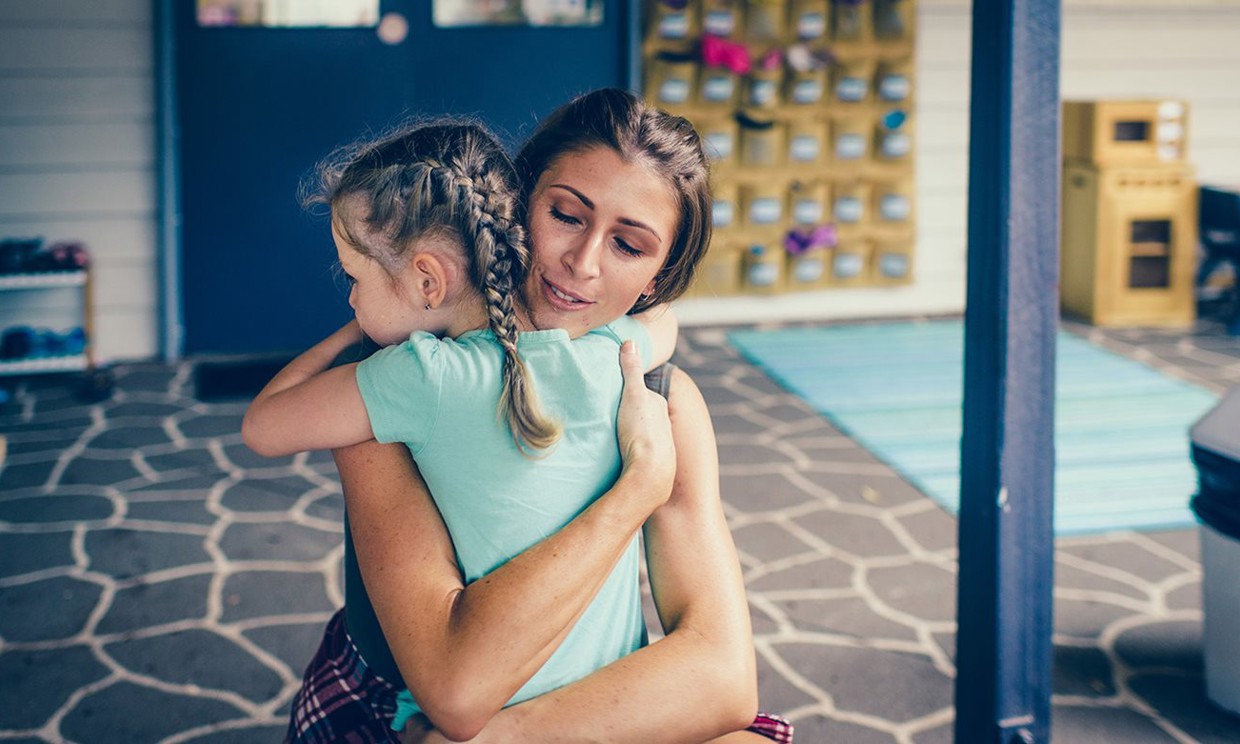Tantrums are among the most challenging behavioural issues faced by parents of young children, and it’s no different for thousands of educators in early learning centres around Australia.
While tantrums and emotional breakdowns are a perfectly normal and indeed common part of early childhood development, the sight and sound of a toddler in full flight is confronting for the best of us…and they often seem to strike at the most inopportune time, like when we’re in a hurry, in public or in some other vulnerable state.
Often, our natural instinct is to use the opportunity presented by a tantrum to help the child learn and understand the reasons why they can’t have that toy, why they need to have a bath, or why they simply must wear pants.
According to Troy Dunn however, we’ve got it all wrong. Troy is Goodstart’s National Inclusive Practices Consultant and helps to deliver training, guidance and advice on supporting children with challenging behaviour to our network of 14 000 educators.
So what should we do when faced with a tantrum?
We’ll get to that in a minute, but first it helps to understand a little about why tantrums occur in the first place.
Why are young children so susceptible to tantrums?
“It’s developmentally appropriate for a child to struggle with turn taking, sharing and following directions when they are not motivated. In the early years children are highly ego-centric and only concerned about their own needs,” says Troy.
In other words, it’s what young children do when they aren’t getting what they want, and it’s because they haven’t learned many of the tools and strategies that most of us take for granted in adult life – things like emotional regulation, empathy for others, or delayed gratification.
“Children are looking for gratification, instantly,” says Troy. “Their brains are not yet ready to think about waiting for things, or to decide if waiting would give them a better result.”
A famous Stanford University experiment in the 1970s illustrates this very stage of childhood development. The researchers placed a child’s favourite treat in front of them, telling them they could eat it now or wait 15 minutes and, if they’d resisted the temptation, receive two treats instead of one.
Needless to say, most children (around two thirds) were unable to wait it out and receive the second treat, and those who could were normally older.
Another common cause of tantrums is an inability to properly communicate their frustrations using language.
So how should we respond to tantrums?
“When a child is in the middle of a tantrum, they can go into fight or flight mode,” Troy says.
Fight or flight is an instinctive human response to threatening situations, and according to Troy when a child is in this state and emotions are running high, rational and logical explanations or reasoning are very unlikely to succeed.
“In fight or flight mode, we’re using a part of our brains associated with survival. We stop using the executive part of our brain that allows us to reason or problem solve.
“We often try to talk a child down from a tantrum by asking them to reflect on what’s happened and the consequences, but in reality the teaching part has to stop at this point.
“To diffuse a tantrum, you have to minimise your role in it and minimise your language. Removing yourself removes the audience and that in itself can often work, but if it doesn’t you just need to ensure everyone is safe and provide very simple instructions to the child.
“Saying things like ‘I can see you’re upset, but I can’t help you until you stop throwing those blocks’ is about as detailed as you should get in that moment.”
Here’s Troy’s best advice for responding to tantrums:
- Don’t try to teach during the tantrum. The child can’t absorb the information and it will just add more frustration to you both.
- Remain calm. Keep your emotions in check and model the behaviour you want to see.
- Don’t reward the behaviour by giving in, as that simply tells the child that their strategy works.
- Set consistent, predictable boundaries and try to remain consistent in the way you respond to tantrums, too.
- Minimise your role and your language. Keep things very simple and clear, detailed instructions just confuse children in this state.
- Be realistic in your expectations. Don’t put your child’s favourite treat in front of them and expect them to be patient.
- Reconnect after the tantrum and be present with your child, but don’t try to re-live the experience with them. Often they can’t remember what happened, and re-living it can make them feel ashamed or embarrassed.
Managing your expectations about what age-appropriate behaviour looks like is important for parents and helps reduce feelings of disappointment or parental failure.
“Tantrums are normal, and they’re inevitable,” Troy says.
“Children can still be susceptible to tantrums up to around seven or eight years old. Our job is not to teach during the tantrum, but to model and coach the development of strong emotional regulation skills.
“Doing this positions children well to learn through school and continue learning as adults.”


